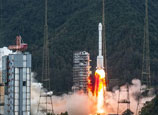
Huo Jianguo, president of the Chinese Academy of International Trade and Economic Cooperation, a think tank affiliated with the Ministry of Commerce, was even more optimistic, saying that it will probably take three years, or "five years at most," for outbound direct investment to match inbound.
"FDI in China is likely to grow in 2013 as the government further opens up the scope for investment, such as the services sector, and improves the investment environment. But growth will be slower than 10 percent owing to constrained transnational investments."
Cross-border investment is estimated to reach $1.6 trillion globally this year, 25 percent lower than the record of $2.5 trillion in 2007.
Surging ODI (from China) is driven by domestic enterprises expanding globally. And the lingering debt crisis in developed economies creates great opportunities for China's overseas mergers and acquisitions.
"But it's important not to forget about risk control in overseas investment, and about quality and efficiency," he said.
Examples include Sany Heavy industry, whose wind farm was axed in the US, and China National Offshore Oil Corp, whose purchase plans for Nexen in Canada ground to a halt.
Chong Quan, deputy representative for China's international trade talks, said on Monday "an increase in disputes was a result of complexity in the overseas environment, and the 'colored glasses' some destination countries wear when judging Chinese companies."


















![]()
